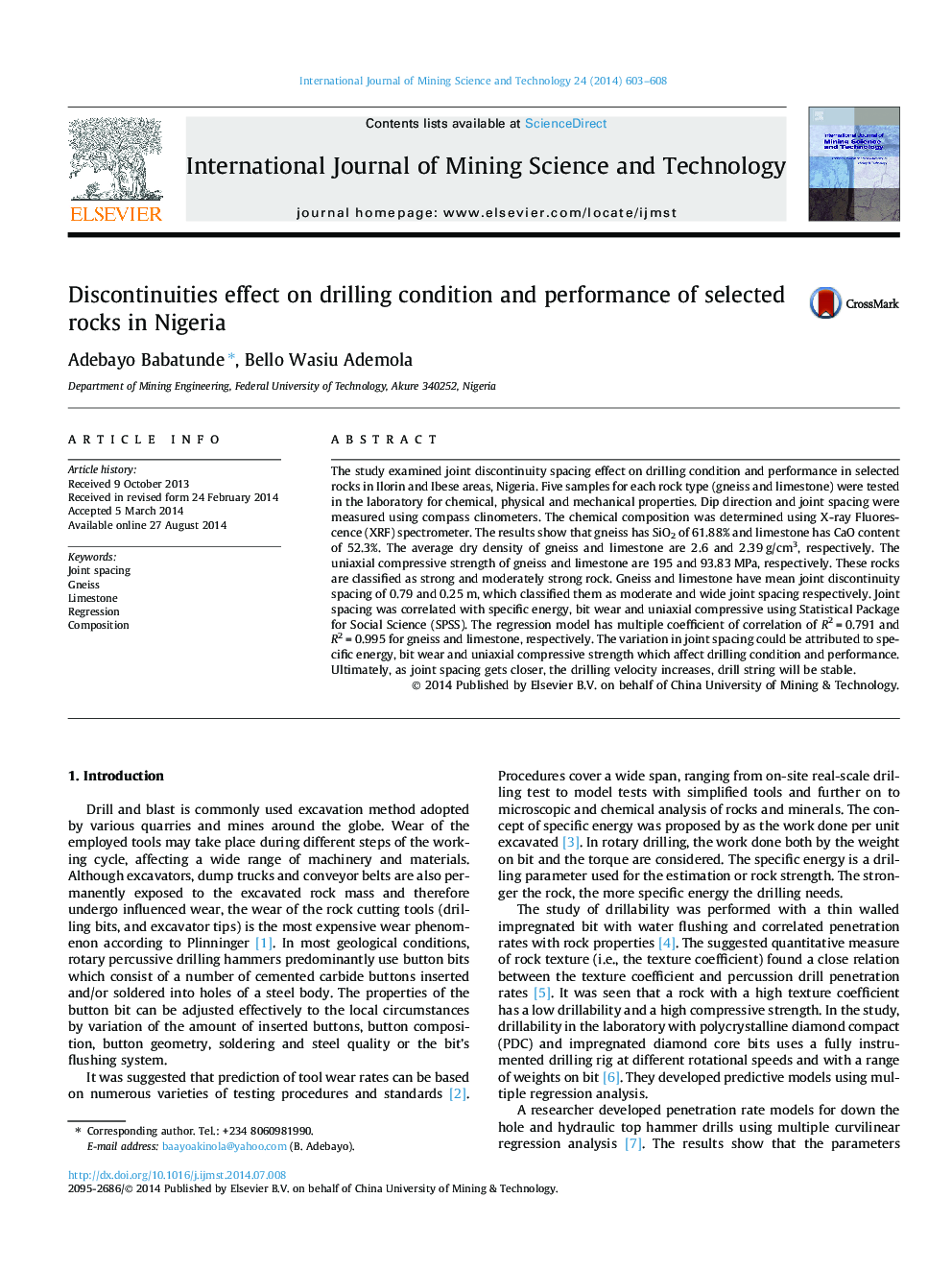| Article ID | Journal | Published Year | Pages | File Type |
|---|---|---|---|---|
| 275472 | International Journal of Mining Science and Technology | 2014 | 6 Pages |
The study examined joint discontinuity spacing effect on drilling condition and performance in selected rocks in Ilorin and Ibese areas, Nigeria. Five samples for each rock type (gneiss and limestone) were tested in the laboratory for chemical, physical and mechanical properties. Dip direction and joint spacing were measured using compass clinometers. The chemical composition was determined using X-ray Fluorescence (XRF) spectrometer. The results show that gneiss has SiO2 of 61.88% and limestone has CaO content of 52.3%. The average dry density of gneiss and limestone are 2.6 and 2.39 g/cm3, respectively. The uniaxial compressive strength of gneiss and limestone are 195 and 93.83 MPa, respectively. These rocks are classified as strong and moderately strong rock. Gneiss and limestone have mean joint discontinuity spacing of 0.79 and 0.25 m, which classified them as moderate and wide joint spacing respectively. Joint spacing was correlated with specific energy, bit wear and uniaxial compressive using Statistical Package for Social Science (SPSS). The regression model has multiple coefficient of correlation of R2 = 0.791 and R2 = 0.995 for gneiss and limestone, respectively. The variation in joint spacing could be attributed to specific energy, bit wear and uniaxial compressive strength which affect drilling condition and performance. Ultimately, as joint spacing gets closer, the drilling velocity increases, drill string will be stable.
